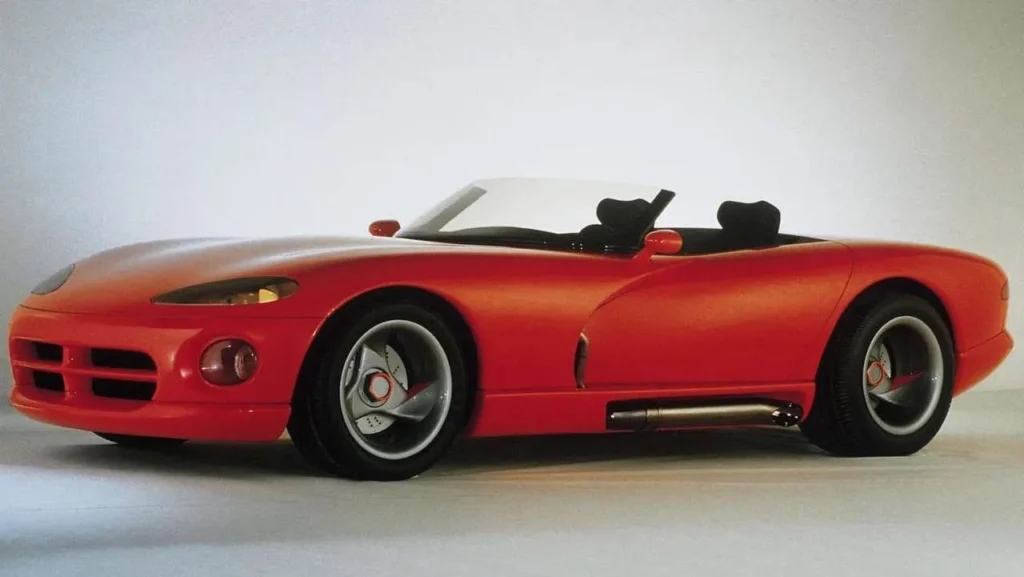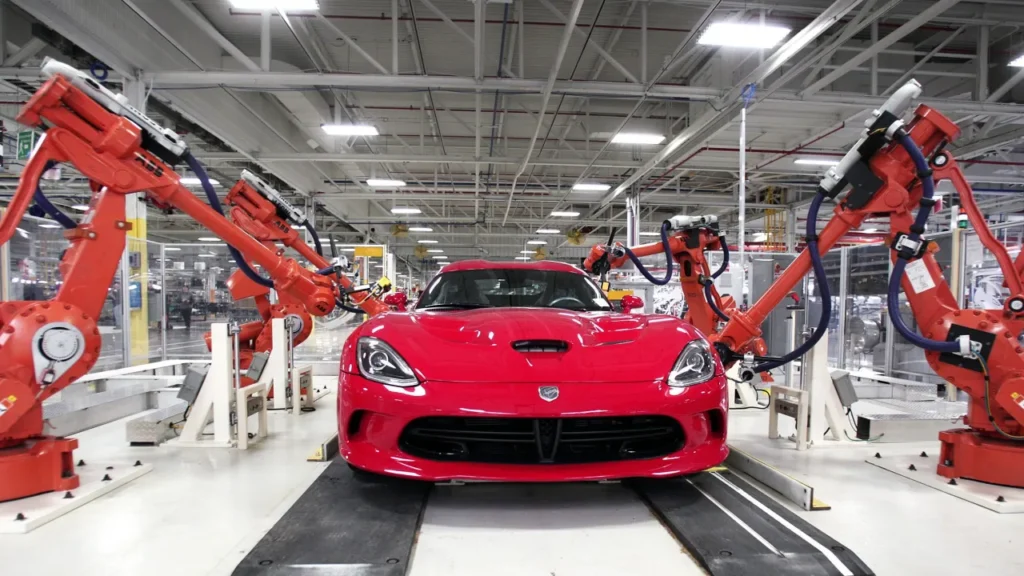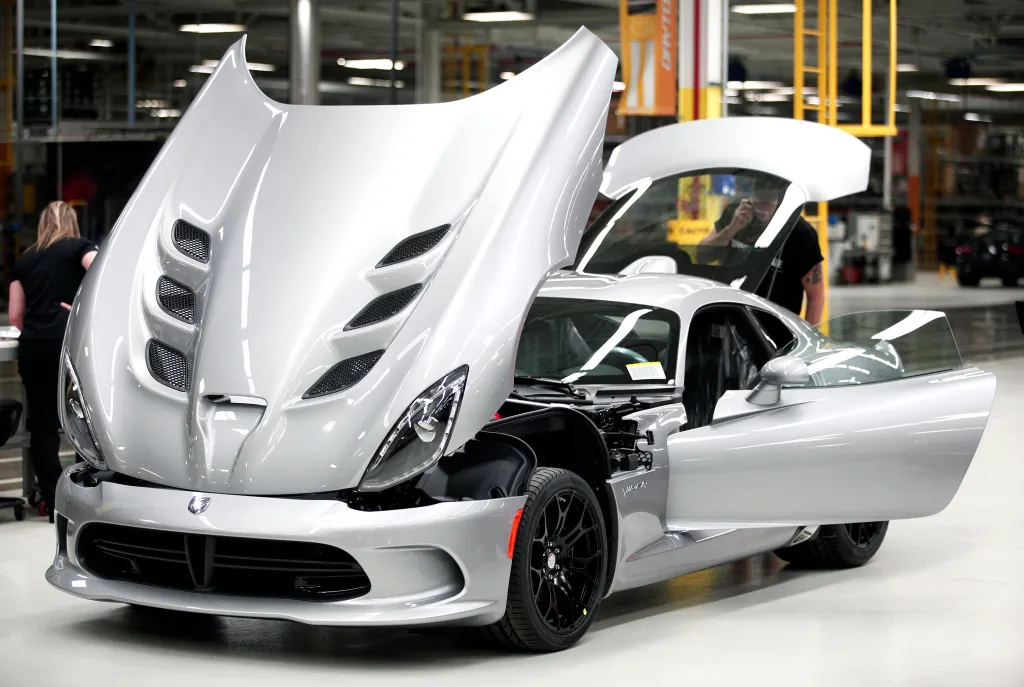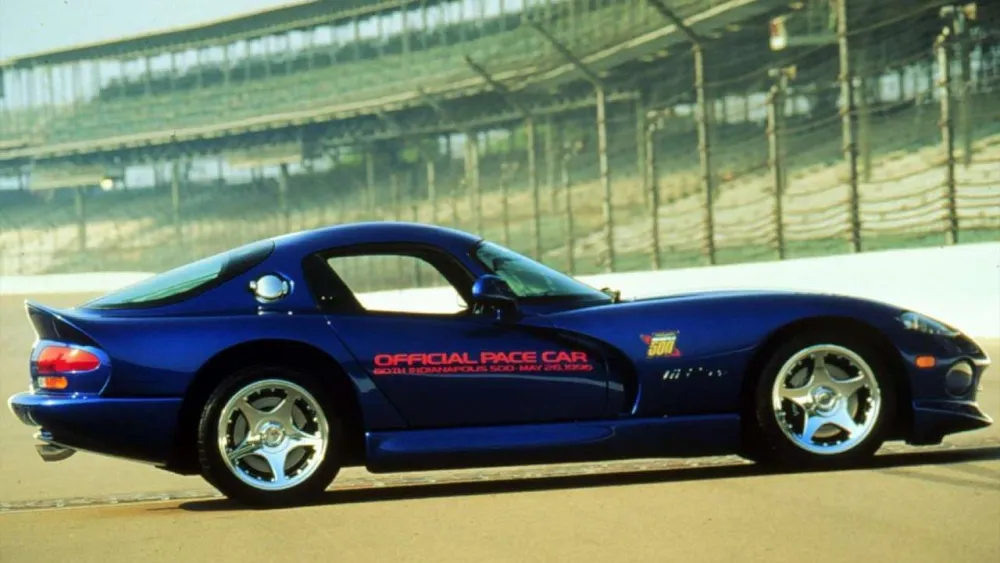The Dodge Viper is an example of the perseverance and innovation that the United States of America has shown in the automobile sector. This legendary sports automobile was instrumental in salvaging Chrysler from a dark point in its history, thanks to its powerful engine and unique styling. This article explores the background, significance, and lasting impact of the Dodge Viper, a legendary American car that captivated fans and helped keep one of the most storied companies alive.
An Icon’s Origins
In the late 1980s, when Chrysler was still trying to establish itself in a very competitive industry, the Dodge Viper was born. Bob Lutz, who was Chrysler’s president at the time, and Roy Sjoberg, who was chief engineer, came up with the idea for the Viper as a way to update the traditional American muscle car. The objective was to develop a car that prioritized athleticism and simplicity over frills so that the driver could focus on having fun on the road.

Creation and Advancement
When it debuted in 1992, the first-generation Viper was poles apart from other modern sports vehicles. Its powerful posture, long hood, and side exhausts captivated the attention of automobile fans across the globe. Under Tom Gale’s leadership, the design team emphasized efficiency and minimalism. A six-speed manual gearbox, an oversized 8.0-liter V10 engine, plus a lightweight fiberglass body made for a sober ride.
Crucial Aspects of the Design
The 8.0-liter V10 engine, which was based on a truck engine but with extensive performance upgrades, was the beating heart of the Viper. It accelerated the vehicle from 0 to 60 mph in a little over 4 seconds with 400 horsepower and 465 lb-ft of torque.
The Viper’s tubular steel space frame chassis was lightweight and stiff.
The car’s simple cabin, which emphasized the driver, and side-mounted exhaust pipes contributed to its aesthetically pleasing and functional design.
How the Viper Contributed to Chrysler’s Rebirth
Chrysler was in a precarious financial position when the Viper made its debut. The popularity of the automobile gave the corporation a much-needed boost to its image and finances. The Viper helped reestablish Chrysler’s reputation as a manufacturer of top-tier sports cars, which in turn boosted sales.
Effect on Product Recognition and Sales
The Viper became Dodge’s iconic sports vehicle and a marketing tool for the rest of the lineup in no time. Its remarkable performance in racing events, such as the American Le Mans Series and the 24 Hours of Le Mans, solidified its status as a legendary vehicle. More people visited Chrysler showrooms, and sales of all Chrysler products were boosted thanks to this favorable impression.

The Viper’s Changing Lineage
There were multiple iterations of the Dodge Viper throughout the years, and each one improved upon the last while keeping the iconic features that made the original so special.
Years 1996–2002: Second Generation
Both the performance and the elegance of the second-generation Viper were enhanced. A 450-horsepower boost was achieved when the engine’s displacement was raised to 8.3 liters. The design was also fine-tuned to make the cabin more pleasant and improve aerodynamics.
Gen X and Gen Y (from 2003 until 2010)
These generations brought forth significant technological achievements. The Viper’s 8.4-liter V10 engine was updated to produce up to 600 horsepower. Modern conveniences like traction control and anti-lock brakes have made the vehicle safer without sacrificing its sporty good looks.
Version 5 (2013–2017)
After more than 20 years of research and development, the Viper reached its last iteration. Its 8.4-liter V10 engine was tuned and produced 645 horsepower. Carbon fiber and aluminum, two modern materials, helped the vehicle reduce weight and increase performance. The Viper maintained its integrity and provided an unparalleled, gut-wrenching driving experience, even with all of its modern upgrades.

Immortalization and Lasting Impact
Even though the Dodge Viper was no longer manufactured, its impact is still felt today. This vehicle continues to represent the cutting edge of American automotive design and engineering. To this day, it piques the interest of young people in sports vehicles and other forms of motoring.
In summary
The Dodge Viper represents ingenuity and tenacity more than it does mere sports cardom. Its influence on Chrysler and the car industry is indisputable. Looking back, we can’t help but celebrate a car that did more than just save a company; it also forever changed the lives of automobile fans all around the world.








